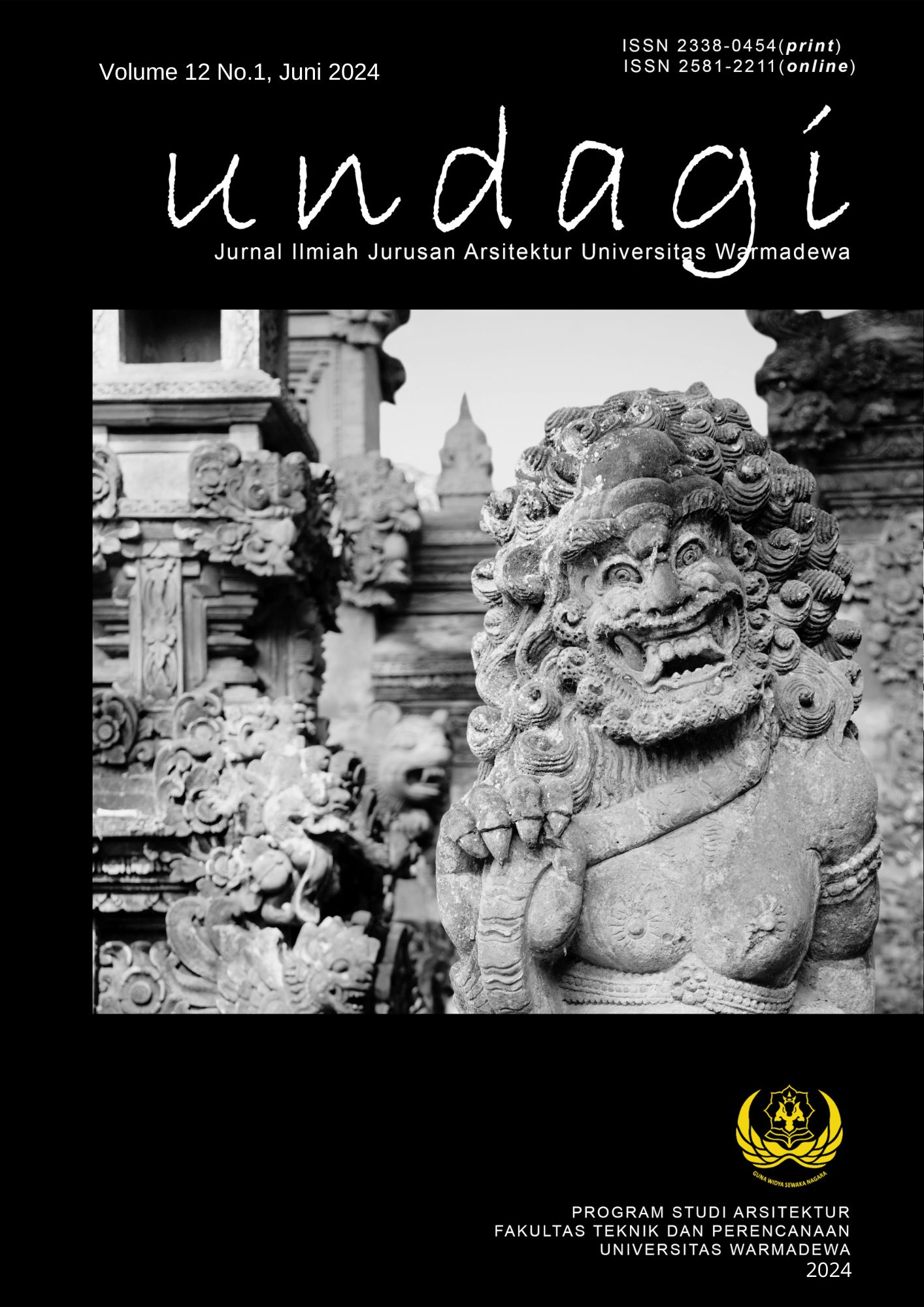PENERAPAN RUMAH SUSUN UNTUK MEMECAHKAN MASALAH KEPADATAN PENDUDUK DI KAMPUNG CUMPAT SURABAYA
Abstract
Surabaya is the second metropolitan city after Jakarta which is encountering fast development in different fields, particularly in framework advancement and natural offices and foundation. Framework advancement in a space will have positive and adverse consequences. The positive side is that framework advancement affects expanding the nature of the area and furthermore working on individuals' government assistance. What's more, the negative side is that this advancement will affect changes in land use and the potential for expulsion or obliteration of existing normal assets. The effect that happens is that land in specific regions, for instance horticultural regions, manors, or hydroponics, will bring about the conclusion of individuals' wellsprings of business. Consequently metropolitan improvement doesn't necessarily in all cases give advantages to the local area. Nonetheless, improvement that is more in light of a legitimate concern for the local area and doesn't harm the climate is a positive part that should be finished by the public authority to foster the city. In view of this, this examination was transferred to tackle issues in the Cumpat Town region, Surabaya, meaning to decrease populace thickness and neighborhood land with a plan framework in Cumpat Town to become Pads.
References
DAFTAR PUSTAKA
Alistanti, F., & Ariastita, P. G. (2021). Strategi peningkatan pengelolaan Rusunawa berdasarkan kepuasan penghuni di Kota Surabaya. Jurnal Teknik ITS, 10(2), C146-C151.
Arif, M., Mulyadi, R., Amalia, A. A., Amal, C. A., Nur, K. W., & Latif, S. (2022). Penataan Kampung Nelayan Barombong dengan Pendekatan Green Architecture. Journal of Muhammadiyah’s Application Technology, 1(2).
Darmiwati, R. (2000). Studi ruang bersama dalam rumah susun bagi penghuni berpenghasilan rendah. DIMENSI (Journal of Architecture and Built Environment), 28(2).
Fakhrozi, B. L. (2019). TA: RANCANGAN ‘SENANG VILLAGE’APARTMENT DENGAN PENDEKATAN URBAN VILLAGE DI BANDUNG (Doctoral dissertation, INSTITUT TEKNOLOGI NASIONAL BANDUNG).
Fajri, K., Trilistyo, H., & Hermanto, E. (2015). Rusunami di Jakarta Timur (Doctoral dissertation, FAKULTAS TEKNIK UNIVERSITAS DIPONEGORO).
Firdaus, F. M., & Nurini, N. (2015). Arahan Penataan Kampung Nelayan Kejawan Lor Dengan Konsep Livable Settlement Pantai Kenjeran, Surabaya. Ruang, 1(4), 201-210.
Hakim, M. A. R., & Trisnandari, L. (2019). Karakteristik dan pola kampung nelayan. Tesa Arsitektur, 17(2), 115-126.
Mawardi, Y. I., Wulandari, R., Istiqomah, G. K. W., Susila, R. L., & Hendriavi, A. I. (2020). Analisis Kualitas Layanan Rumah Susun Sederhana Sewa (Rusunawa) Semeru dengan Menggunakan Metode Importance Performance Analysis (IPA). MATRAPOLIS: Jurnal Perencanaan Wilayah dan Kota, 1(1), 1-14.
Salim, T. A. (2020). Perancangan Rumah Susun Sederhana Kuta Alam Banda Aceh (Doctoral dissertation, UIN AR-RANIRY).
Sapoetra, N. J. (2021). HUNIAN ADAPTIF SEBAGAI REVITALISASI PERMUKIMAN KUMUH KAMPUNG RAWA BENGEK. Jurnal Sains, Teknologi, Urban, Perancangan, Arsitektur (Stupa), 3(2), 1787-1802.
Suhada, I. A. (2018). PENERAPAN PRINSIP EKO-ARSITEKTUR STUDI KASUS PERENCANAAN KAWASAN KAMPUNG WISATA PONGGOK CIBLON Disusun (Master's thesis, Universitas Islam Indonesia).
Surjono, I. L. (2022). Rumah Susun Adaptif dan Rekreatif bagi Kampung Nelayan Sukolilo di Surabaya. eDimensi Arsitektur Petra, 10(1), 305-312.
Utara, J., Wisata, S. K., Kurniawan, M. G., & Komala, O. N. (2023). METODE KESEHARIAN DALAM PENATAAN KEMBALI KAMPUNG NELAYAN KAMAL MUARA ,. 5(1), 323–334. https://doi.org/10.24912/stupa.v5i1.22595
Wardani, G. A., Wijayanti, & Murtomo, B. A. (2014). Penataan Kampung Nelayan Desa Bendar-Bajomulyo Kecamatan Juwana Kabupaten Pati. Jurnal Imaji, 3(3), 227–238.
Copyright (c) 2024 Undagi : Jurnal Ilmiah Jurusan Arsitektur Universitas Warmadewa

This work is licensed under a Creative Commons Attribution-ShareAlike 4.0 International License.
The copyright will be filled by the author if the manuscript has been received and ready to be published and the author will get a letter of acceptance and evaluation of the manuscript from the reviewer as proof of the manuscript has passed the peer-reviewer Abstract viewed = 48 times
Abstract viewed = 48 times
 pdf (Bahasa Indonesia) downloaded = 39 times
pdf (Bahasa Indonesia) downloaded = 39 times












